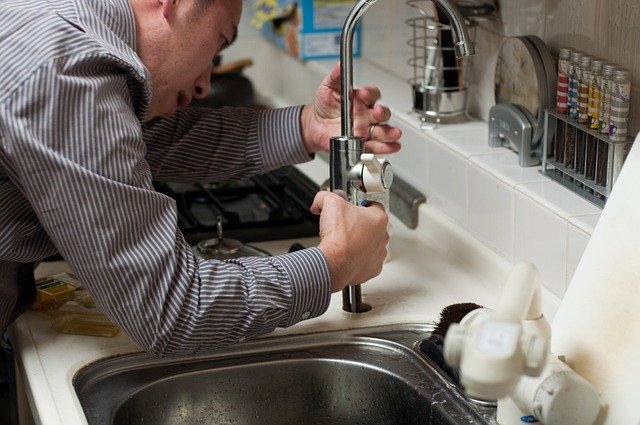What You Need to Know About Refrigerator Prices and Buying Mistakes
Purchasing a new refrigerator involves navigating complex pricing structures and avoiding costly mistakes that could impact your budget and satisfaction. Understanding how various factors influence costs, from size and features to energy efficiency ratings, helps ensure you make an informed decision. Many buyers overlook critical considerations that affect long-term value and reliability, leading to regret and unnecessary expenses.

Modern refrigerators represent a significant household investment, with prices varying dramatically based on numerous factors. The appliance market offers countless options, from basic models to premium units packed with smart technology. Understanding the pricing landscape and common purchasing pitfalls can save you thousands of dollars while ensuring you select a unit that meets your family’s needs for years to come.
How Do Refrigerator Prices Vary by Features and Size?
Refrigerator pricing follows predictable patterns based on capacity, configuration, and feature sets. Basic top-freezer models typically start around $800-$1,200 for standard sizes, while bottom-freezer units range from $1,200-$2,500. Side-by-side configurations generally cost between $1,500-$3,500, with French door models commanding premium prices from $2,000-$6,000 or more.
Capacity significantly impacts pricing, with each additional cubic foot adding approximately $50-$100 to the base cost. Counter-depth models carry a premium of $300-$800 over standard-depth equivalents due to specialized design requirements. Smart features like Wi-Fi connectivity, internal cameras, and touchscreen displays can add $500-$2,000 to the final price.
What Common Mistakes Should Buyers Avoid?
Measurement errors rank among the most expensive mistakes buyers make. Failing to account for door swing clearance, ventilation space, or delivery pathway restrictions can result in costly returns or professional modifications. Many buyers focus solely on external dimensions while ignoring internal capacity, leading to insufficient storage space.
Another frequent error involves overlooking energy efficiency ratings. While Energy Star certified models may cost $100-$300 more upfront, they typically save $200-$400 annually in electricity costs. Buyers often underestimate the importance of warranty coverage, choosing extended warranties that provide minimal value while skipping manufacturer protection plans that offer genuine benefits.
Which Features Impact Long-term Reliability and Value?
Compressor quality represents the most critical factor affecting refrigerator longevity. Linear compressors typically outlast traditional reciprocating models by 3-5 years, justifying higher initial costs through reduced repair expenses. Stainless steel interiors resist odors and stains better than plastic alternatives, maintaining performance and resale value over time.
Ice maker quality varies significantly between manufacturers, with some requiring frequent maintenance while others operate reliably for decades. Water filtration systems should feature easily replaceable filters with reasonable ongoing costs. Door seal construction affects energy efficiency throughout the unit’s lifespan, with premium seals maintaining effectiveness longer than basic alternatives.
What Should You Verify Before Purchase?
Delivery logistics require careful consideration before finalizing any purchase. Measure doorways, stairwells, and hallways along the delivery path, accounting for the refrigerator’s actual dimensions plus maneuvering space. Verify electrical requirements, as some large units require dedicated circuits or specific outlet configurations.
Warranty terms vary substantially between manufacturers and retailers. Standard coverage typically includes one year for parts and labor, with extended compressor warranties ranging from 5-10 years. Some credit cards offer purchase protection that duplicates manufacturer warranties, making extended retail warranties unnecessary.
| Model Type | Size Range | Price Range | Key Features |
|---|---|---|---|
| Top Freezer | 14-22 cu ft | $800-$1,500 | Energy efficient, reliable |
| Bottom Freezer | 18-25 cu ft | $1,200-$2,800 | Easy access, drawer storage |
| Side-by-Side | 20-28 cu ft | $1,500-$3,500 | Water/ice dispenser, narrow doors |
| French Door | 20-30 cu ft | $2,000-$6,000 | Premium features, large capacity |
| Counter Depth | 18-26 cu ft | $2,500-$5,000 | Built-in appearance, space saving |
Prices, rates, or cost estimates mentioned in this article are based on the latest available information but may change over time. Independent research is advised before making financial decisions.
Successful refrigerator shopping requires balancing immediate needs with long-term considerations. Understanding how features affect pricing helps identify models that provide genuine value rather than unnecessary complexity. Avoiding common purchasing mistakes while prioritizing reliability-focused features ensures your investment serves your household effectively for many years. Taking time to verify practical considerations like delivery requirements and warranty coverage prevents costly surprises and maximizes satisfaction with your final selection.




